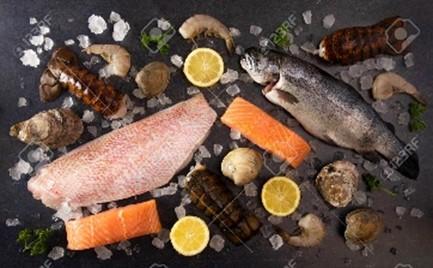We all know that eating fish is good for health. Fish represents a great source of lean protein, unique omega- 3 fatty acids and bioavailable micronutrients which are often lacking in plant-based diets. In addition, fish offers an alternative animal-based product with a lower environmental footprint.
One of the main health benefits of eating fish is that it reduces the risk of cardiovascular disease and stroke. Many countries have therefore drawn up dietary recommendations for seafood consumption as part of their national dietary guidelines; similar to the UK’s five portions of fruit and vegetables a day. As with many recommendations, these have developed in line with country-specific nutrient intakes, available scientific evidence, and cultural trends and so vary from country to country.
At the same time as increasing interest in heathy diets, concerns about over-exploitation of fish stocks has been growing. In light of this, it is remarkable that only a few countries appear to have considered environmental issues when developing guidelines for fish consumption. Indeed, going forward, considering environmental sustainability as part of dietary recommendations is essential given the pressures on global seafood supplies from growing populations and increased demand.
To help policy makers consider the linkages between dietary recommendations and supply, we reviewed seafood dietary guidelines across Europe and compared them to national seafood supplies. Current dietary recommendations were gathered from the national health authorities across Europe while production and trade data was obtained from the Food and Agricultural Organization (FAO) food balance sheets. The data included wild and farmed statistics for all finfish, crustaceans, and molluscs from marine, freshwater and brackish environments. National seafood supply was calculated from seafood caught for human consumption, plus imports, minus exports. These national seafood supply values were then compared to dietary recommendations.
We found that in less than half of all European countries, seafood guidelines were satisfied by national supplies. Many governments are therefore recommending eating fish and seafood that is simply not available to consumers.
It is clear that to ensure healthy, sustainable and secure food environments, it is important to understand how our diets relate to food supply chains - what is being produced, what is imported and exported, and how does supply relate to what we eat and what we should be eating? This is particularly relevant for the Scottish seafood chain, where concentration of consumer demand around the ‘big five’ (cod, haddock, tuna, salmon, prawns) leaves us with an imbalance in terms of seafood supplies, with most of our own produce being exported and the majority of the fish that we process or consume being imported. In addition, our fish consumption is only half of what is recommended, but, our dietary recommendations for fish consumption are not satisfied by national seafood supplies.
Both changes in supply and demand for seafood may be needed to address the mismatch of what is consumed and what is being produced. In addition, policymakers may need to consider much more carefully the implications of ‘optimal’ human health and ‘healthy’ fish and seafood stocks.
Anneli Lofstedt, Professor Baukje de Roos and Professor Paul Fernandes.
This research was supported by the Biotechnology and Biological Sciences Research Council (BBSRC) under the East of Scotland Bioscience Doctoral Training Partnership (EastBio DTP) and the Scottish Government’s Rural and Environment Science and Analytical
